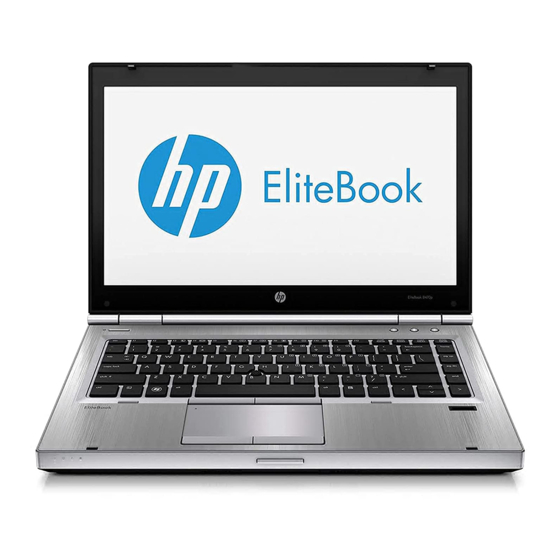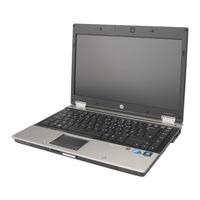
HP EliteBook 9470m Manuals
Manuals and User Guides for HP EliteBook 9470m. We have 6 HP EliteBook 9470m manuals available for free PDF download: User Manual, Maintenance And Service Manual
HP EliteBook 9470m User Manual (187 pages)
Table of Contents
-
1 Features
13 -
-
Using a WLAN32
-
-
4 Multimedia
58-
Audio61
-
Video63
-
-
-
CD-R Discs66
-
CD-RW Discs66
-
DVD±R Discs66
-
DVD±RW Discs66
-
-
Webcam76
-
-
6 Drives
95
Advertisement
HP EliteBook 9470m User Manual (169 pages)
HP EliteBook 8440P: User Guide
Table of Contents
-
1 Features
13 -
-
-
-
4 Multimedia
51-
Audio54
-
Video56
-
-
-
CD-R Discs59
-
CD-RW Discs59
-
DVD±R Discs59
-
DVD±RW Discs60
-
-
-
-
6 Drives
87
HP EliteBook 9470m User Manual (163 pages)
HP EliteBook Notebook User Guide
Table of Contents
-
1 Features
13 -
-
-
-
4 Multimedia
50-
Audio53
-
Video55
-
-
-
CD-R Discs58
-
CD-RW Discs58
-
DVD±R Discs58
-
DVD±RW Discs58
-
-
-
-
6 Drives
86
Advertisement
HP EliteBook 9470m User Manual (177 pages)
Notebook PC
Table of Contents
-
1 Features
13 -
-
-
Using a WLAN30
-
-
-
-
4 Multimedia
51 -
-
6 Drives
80 -
HP EliteBook 9470m User Manual (104 pages)
Table of Contents
-
1 Welcome
11 -
-
-
Using a WLAN27
-
-
-
5 Multimedia
41 -
-
-
8 Drives
60
HP EliteBook 9470m Maintenance And Service Manual (144 pages)
Notebook PC
Table of Contents
-
-
-
-
Battery49
-
Sim50
-
Msata Drive58
-
RTC Battery60
-
WWAN Module64
-
WLAN Module66
-
Keyboard68
-
Touchpad73
-
Fan76
-
System Board77
-
Heat Sink80
-
-
Advertisement





